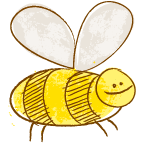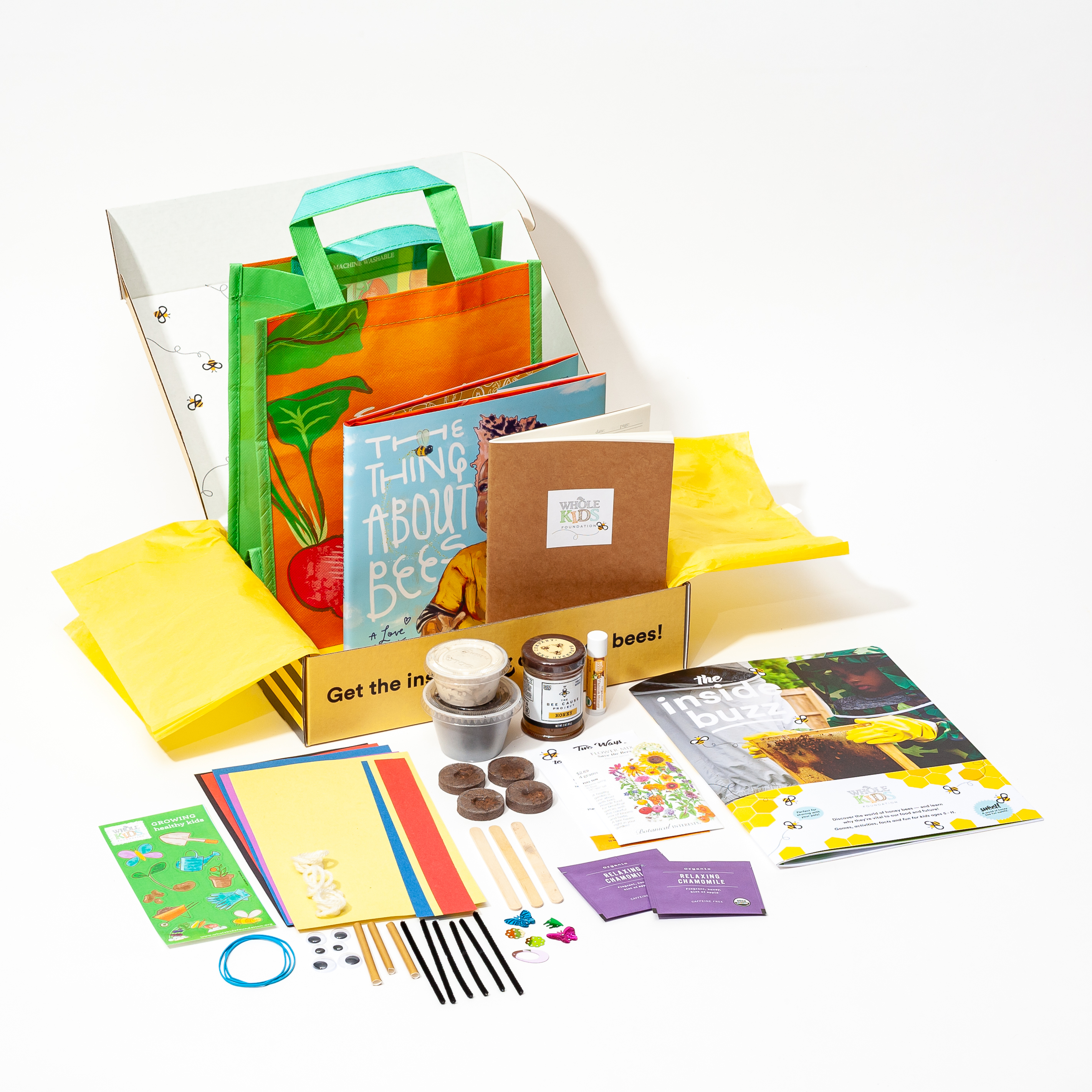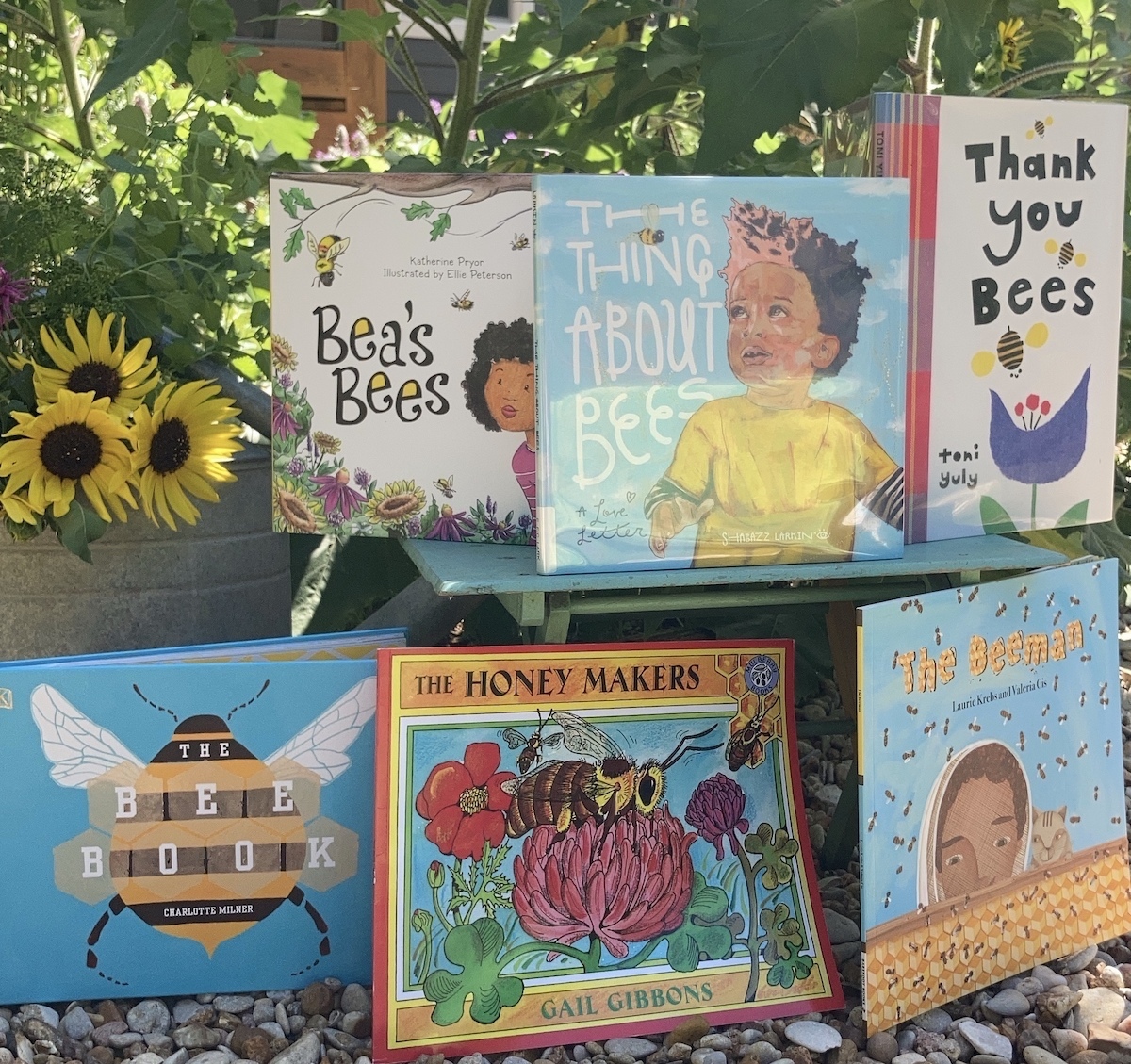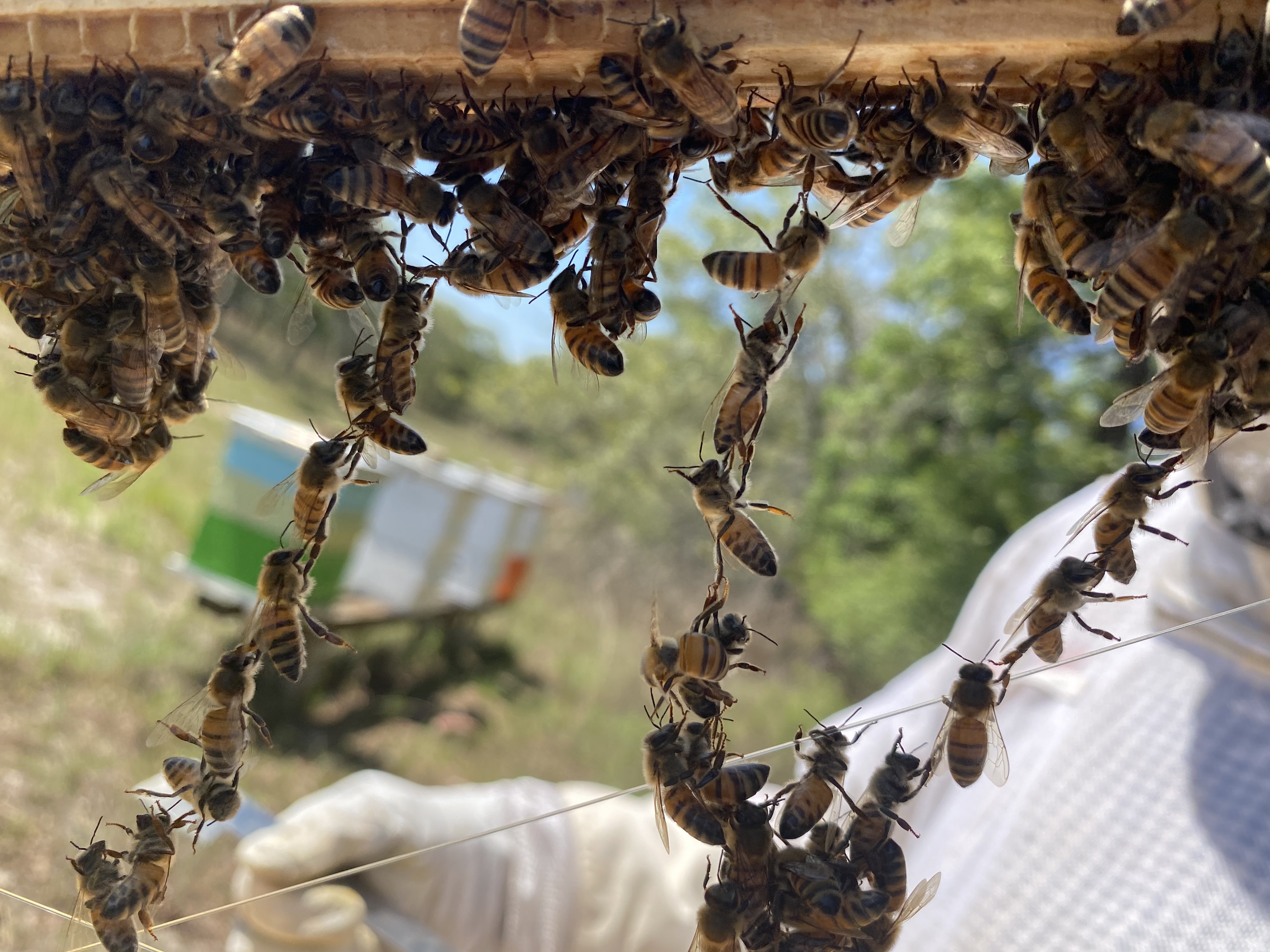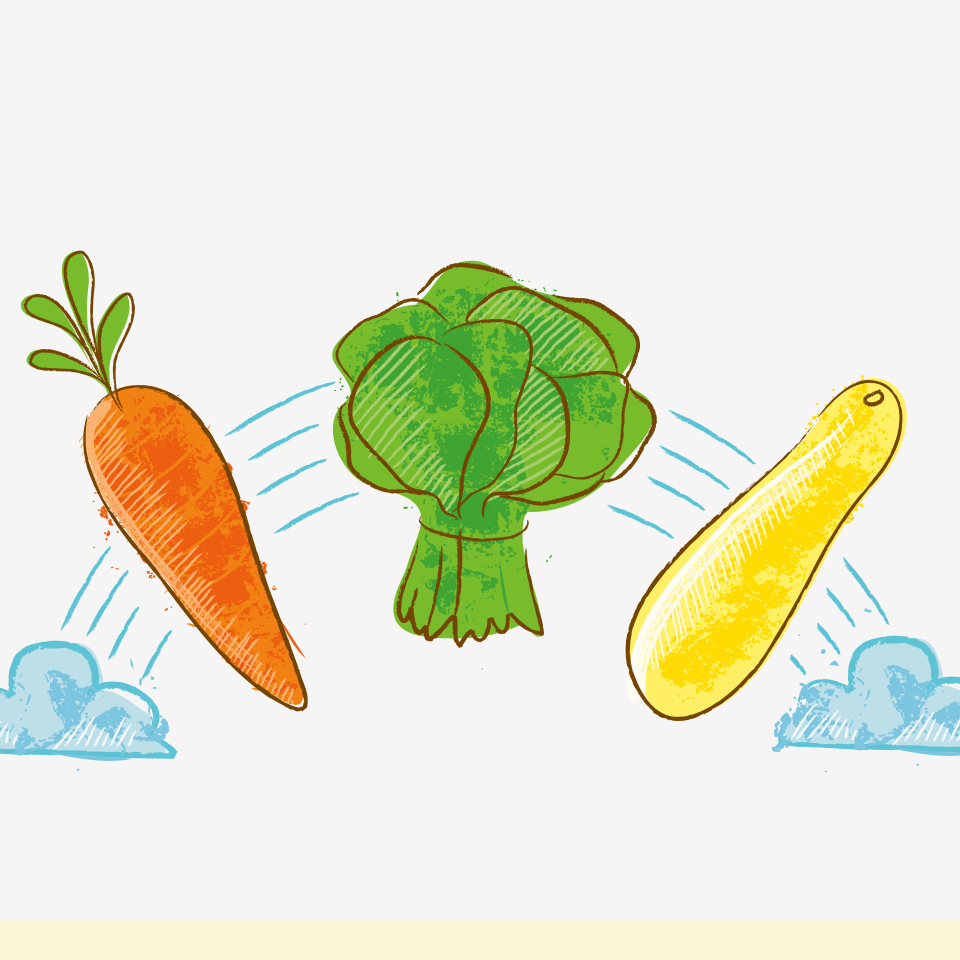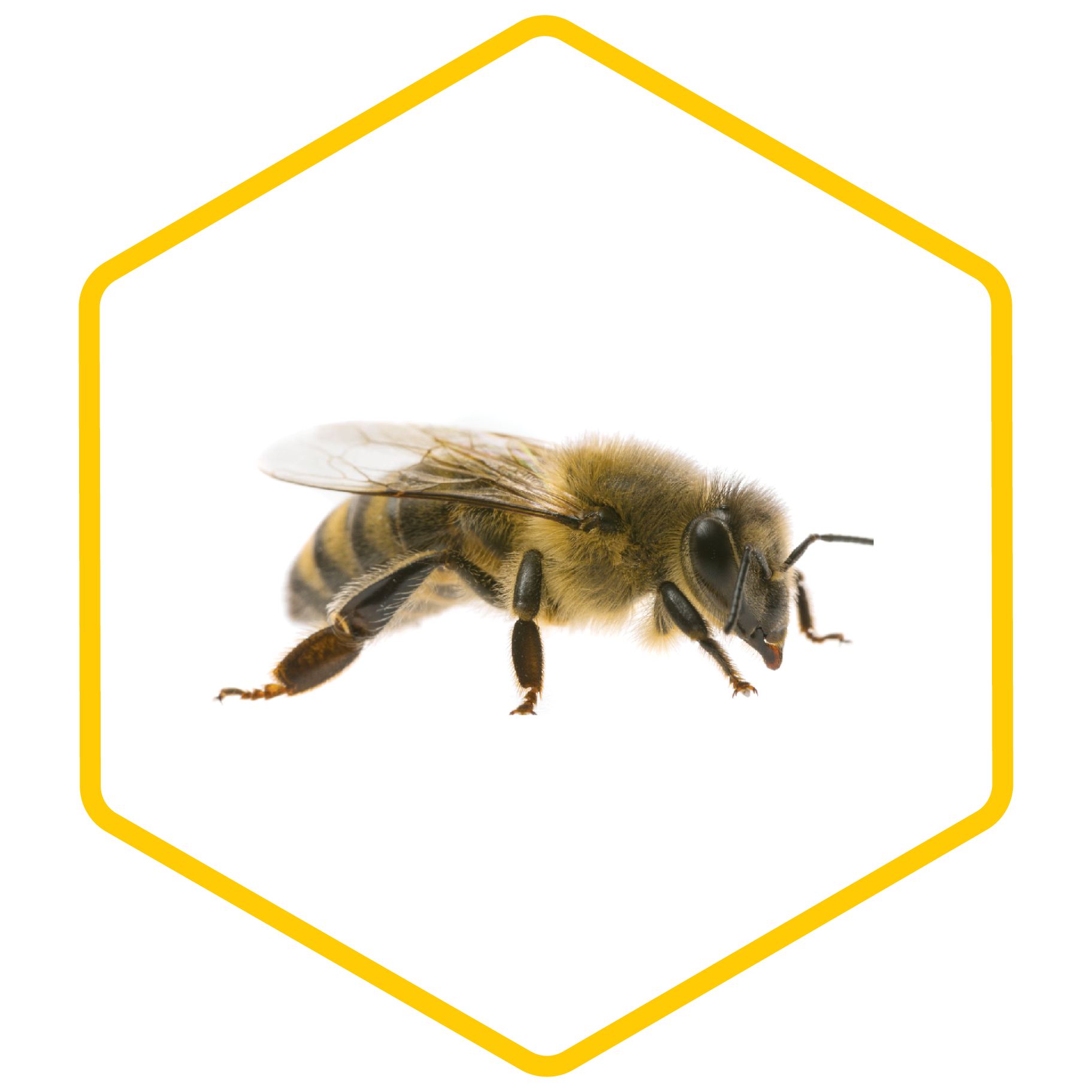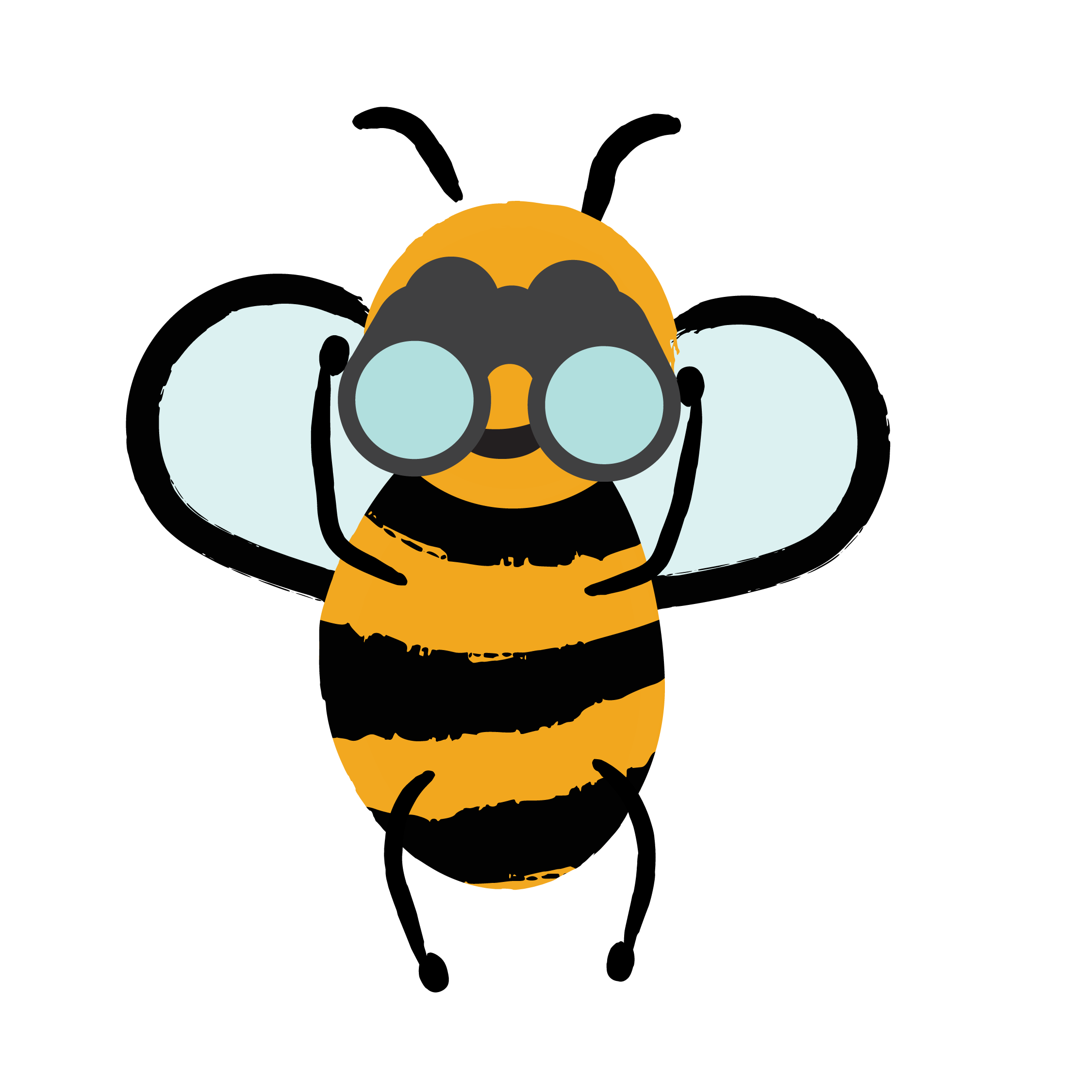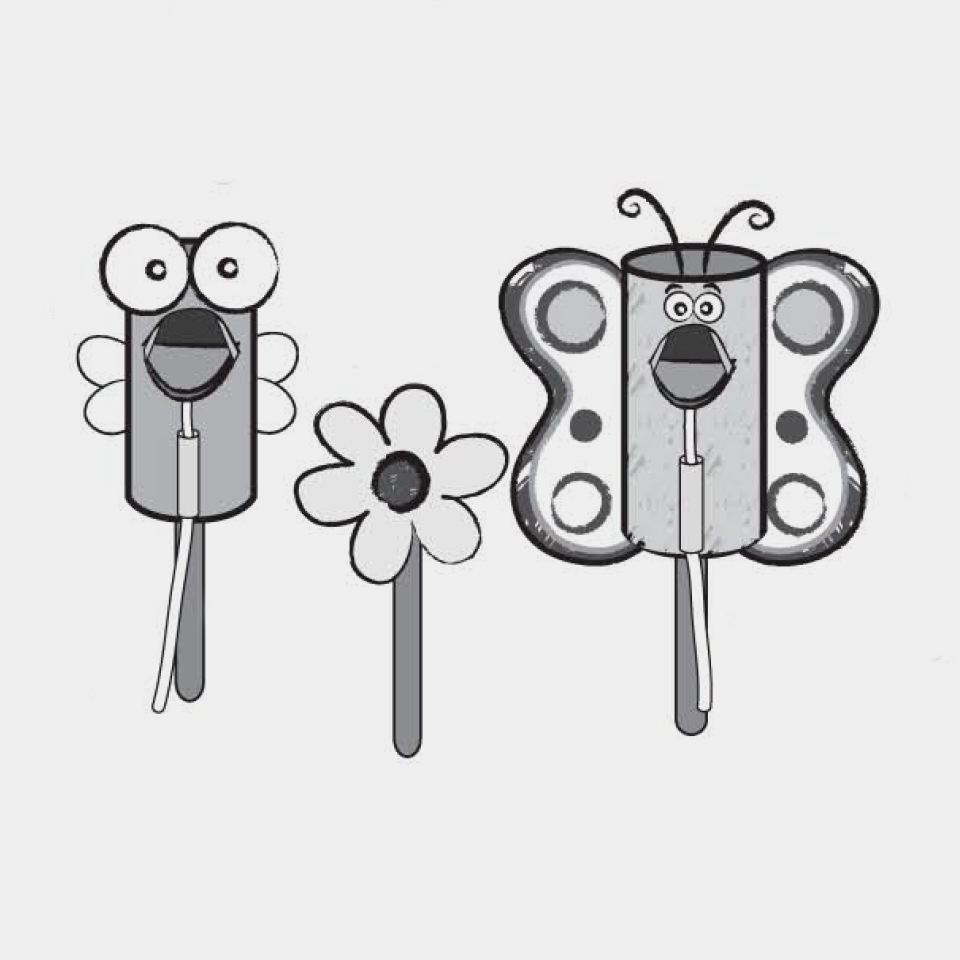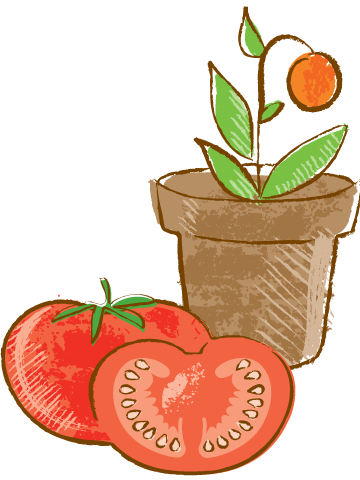Packed with things to touch, taste, craft, plant and learn, our Honey Bee Experience Box is designed to provide a family adventure filled with fun and fascinating facts.
Are you the proud owner of one of these amazing boxes? First off, thank you for supporting honey bee education initiatives in schools!
And now, what should you do with all this cool stuff? There are hours of fun and educational activities inside, and we’ve got lots of ideas to help you get the most from your box.
One idea? Plan a pollinator week.
We’ve made it easy with the outline below, but you can plan your pollinator week however you like. Do a few activities each day, or declare one day each week for a month as Bee-Day!
Each day, plan 1) an element of learning 2) something hands on and 3) time for an active body. You can even turn gathering the supplies for each activity into a scavenger hunt. Kiddos can keep track of observations, questions, doodles and lightbulb moments in the notebook provided, and at the end of the week they’ll have a journal of their learning adventure.
